From where the best places are to the best time to visit, this is your guide to seeing nature's light show. We also answer your questions on how to see the northern lights in Norway.
After hours of searching, just as your hope is declining, you see it. A thin streak of pale green just above the mountain. Minutes later, delicate ribbons of colour dance across the Arctic sky in complete silence.
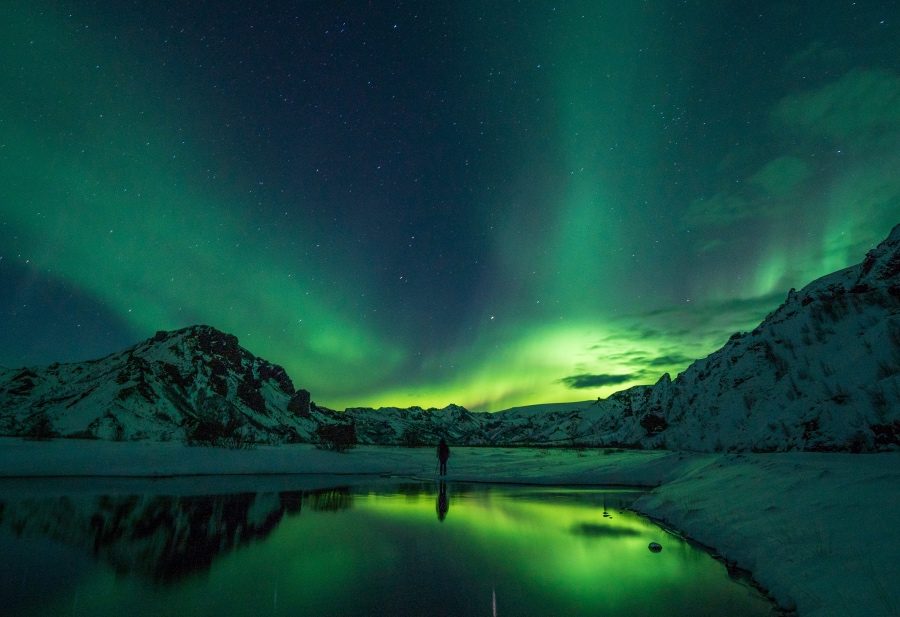
The aurora borealis is a major tourist attraction for northern Scandinavia, and Norway in particular. The internet is filled with great northern lights photography, which has placed an aurora-hunting trip top of so many people's bucket lists.
In fact, people travel all the way from Asia to see the lights. The numbers travelling from this part of the world had increased for several consecutive years in the late 2010s.
But planning a trip to see them isn't so easy. The lights are not an attraction that you can just turn up to like a theme park or museum. There is no set schedule.
If you’re hoping to see the aurora borealis in Norway, my advice is to read as much as you can beforehand. Learn about the lights, read all the advice, and you’ll be far less likely to be disappointed.
Table of Contents
What are the northern lights?
Let’s start with some science. Wait, don’t leave! Bear with me for a few paragraphs.
Search for the ideal northern lights tour in Norway
It’s important to have at least a basic understanding of what causes the northern lights in order to better appreciate what you’re seeing. It also helps with understanding how best to see them.
So, northern lights are caused by electrons streaming out from the sun in a solar wind. When they are caught by the Earth’s magnetic field, the electrons are forced into the polar atmosphere where they collide with atoms and molecules.
This collision creates tiny emissions of light. When that happens billions of times, it culminates in the lights we see from the ground.
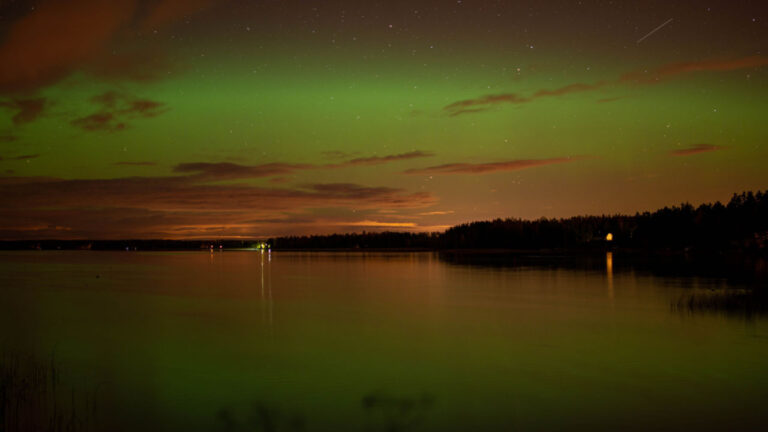
If you monitor the Sun and observe strong disruptions, you can expect a display of northern lights a couple of days later. Although predicting the lights sounds technical, thanks to modern technology it’s no more difficult than checking the weather forecast.
In fact, that’s what you’re doing, checking the sun’s weather forecast looking for solar winds.
Several websites predict the light display and although it’s not an exact science, it does give you a realistic idea of whether you can expect a display over the coming few nights.
There are several websites and apps for space weather. For years I’ve used Aurora Service Europe for longer-term forecasting. In recent years, I’ve been experimenting with more technical apps for short-term predictions.
What do the northern lights really look like?
On a recent cruise to Northern Norway, I met several people who were underwhelmed with what they saw. “But did you see that with the naked eye?” was all they would say when they saw our photos.
It’s a fair question. Photographs of the northern lights almost always enhance their intensity, compared with what we see in person. I’ve long assumed that was a well-understood fact, but apparantly not!
This isn’t any kind of trick. It works exactly the same when photographing any city scene at night with a modern camera. Colours and light will always appear more intense on your camera screen than they do through your eyes.
But that’s not the end of the story. Most people complaining simply stuck their head out on deck, saw what they saw, and went inside. The truth about night vision for humans is it can take a long time for your eyes to adjust. Up to 15 minutes, I’m told.
I realised this when looking at stars from the ship. A friend of mine commented he could only see three or four, whereas I could see loads.
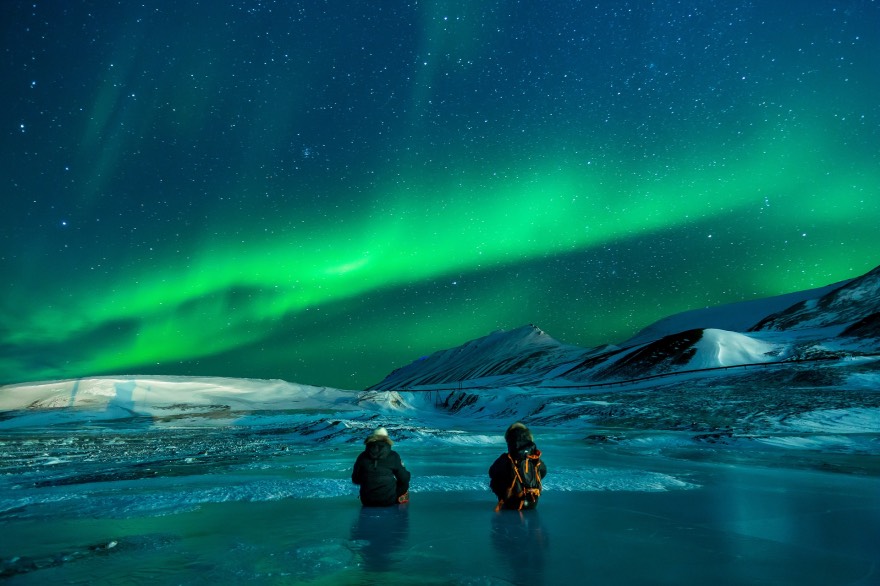
I told him just to wait a few minutes. Then he was shocked! Suddenly he could see the night sky full of stars. Nothing had changed. His eyes had just taken time to adjust.
When you consider this together with the fact that the northern lights are always changing, it’s easy to understand why someone who doesn’t take the time will be underwhelmed.
Where and when to go
The most important thing to state upfront is there is absolutely no guarantee of seeing the northern lights in Norway wherever you go. However, it's true to say that you can do several things to increase your chances.
The basic requirements are simple: total darkness and a clear sky. This immediately rules out the summer months in northern Norway, as the midnight sun ensures light throughout the season, day and night.
It also means you should avoid coastal areas as there is a higher chance of cloud cover, and get away from the ambient light of built-up areas.
Luckily, Arctic Norway is made up of miles and miles of remote wilderness, offering some excellent vantage spots. The Lofoten islands are a top choice to enjoy surfing under the northern lights, if you are lucky enough to be there at the right time!
You should also avoid midwinter when the worst weather tends to hit the region. September-October and February-March are generally accepted to be the best times to chase the aurora borealis.
But despite this, November, December, and January can come up trumps too, as long as you can find clear skies. If you’re planning a trip in these months, I’d advise making it slightly longer to compensate for the higher chance of poor weather.
Where to stay
Chasing the northern lights is an incredible experience. Although seeing them can never be guaranteed, one thing can be: you will get cold.
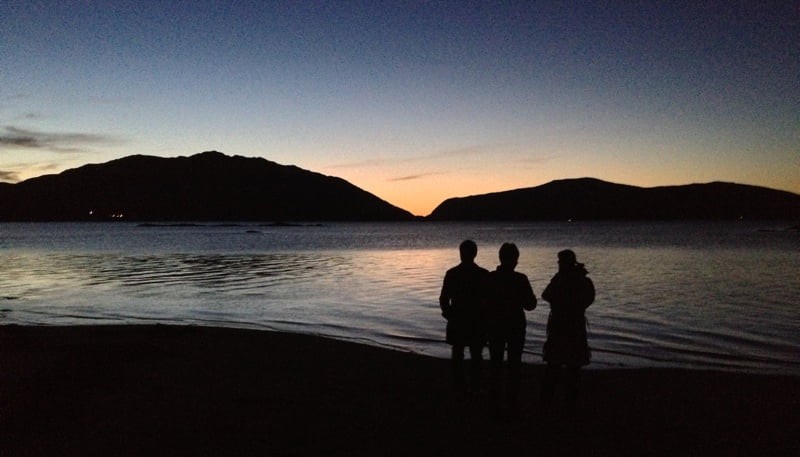
Sometimes you will be standing outside in the cold for hours, and not matter how well dressed you are, you are going to feel the chill.
It really is worth investing in a hotel for a northern lights chase, and in the north of Norway that normally means Tromsø, or if you really don't mind the cold, Alta.
Search for hotels in Tromsø / Search for hotels in Alta
I've seen the lights overhead from the city centre of Tromsø so it's definitely possible to enjoy a display without leaving the city, but your chances increase drastically the further away you go.
Still, the small yet lively city of Tromsø makes an excellent base for your nighttime adventures. For one thing, there's plenty more to see and do in and around Tromsø. So, if the lights don't come out to play, you'll still enjoy your trip.
How to see the northern lights in Norway
One big decision to make is whether you take a guided tour or try going solo. If you have a car, it's worth considering a solo adventure, otherwise stick with a tour group.
Most groups are small and are facilitated by expert chasers who use the very latest technology to know when and where to drive.
Some groups have been known to travel hundreds of kilometres in one night. Some even drive across the Swedish and/or Finnish borders in order to find that elusive clear sky. Search for a northern lights tour here.
Packing tips for northern lights travel
When preparing for a journey to witness the northern lights in Norway, the key to enjoying this unforgettable experience lies in dressing appropriately and packing wisely.
Even if you're part of an organized tour group that promises to provide essentials like warm clothing, food, and beverages, it's paramount to come prepared for the Arctic conditions.
What to wear for a northern lights hunt
While these groups might supply an outer layer, such as a body suit designed to shield you from the biting cold, this is merely the starting point for what you should wear.
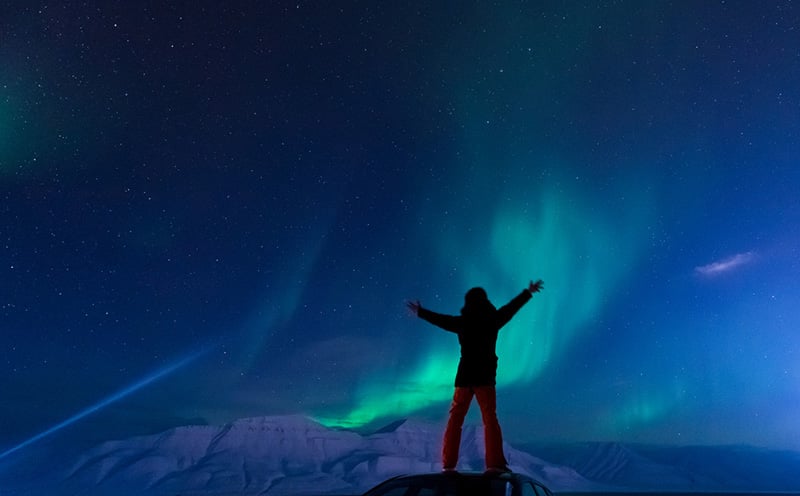
Learning all about layering is your best defence against the cold. Aim for at least three layers on your torso and two on your legs. Start with a high-quality base layer; these are designed to keep you warm and dry by wicking moisture away from your body.
Your next layer should consist of insulating materials, such as a woolen jumper or fleece, to trap warmth. The outer layer provided by your tour group or your own should be wind and waterproof, capable of protecting you against harsh conditions.
For your hands and feet, don't skimp on thickness or quality. Thick gloves are essential, not just for comfort but to avoid frostbite.
Similarly, wool or thermal socks are a must-have in your packing list, coupled with sturdy, waterproof boots to keep your feet dry and warm.
Other essential items to pack
Aside from clothing, a few additional items can make your northern lights hunt more enjoyable and successful.
A torch or headlamp is incredibly useful, especially since you'll be navigating in the dark to find the perfect spot for aurora viewing.
Remember to bring extra batteries, not just for your torch but also for any cameras or electronic devices you bring along.
The cold can drain battery life surprisingly quickly, so keep spare batteries warm, perhaps wrapped in a sock or insulated pouch, to prolong their life.
If you're bringing a camera to capture the awe-inspiring spectacle of the northern lights, consider packing a tripod. This will help you take clear, steady shots of the aurora borealis, which often requires long exposure times.
Additionally, lens cleaning materials can be handy, as the cold weather might cause condensation or frost on your camera.
Finally, consider your personal comfort and safety. Lip balm, moisturizer, and thermal water bottles can make the experience more enjoyable, keeping you hydrated and protecting your skin against the cold and wind.
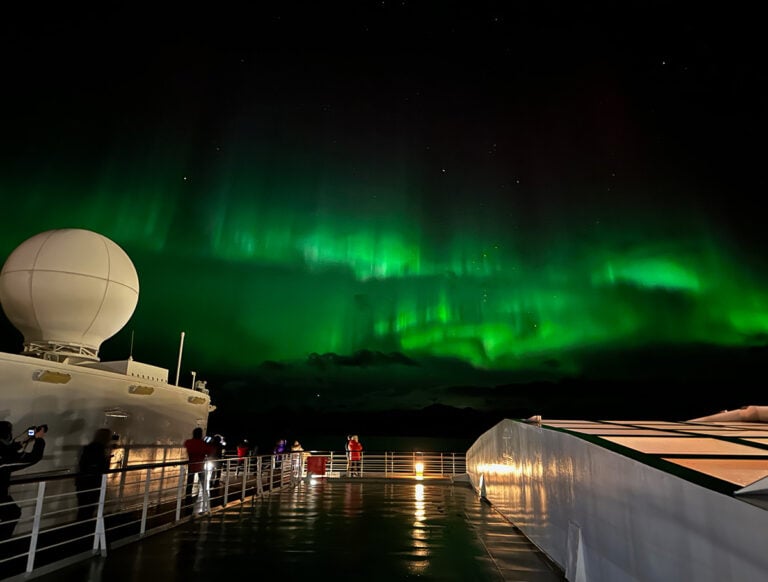
Always inform your tour guide or group leader of any personal needs or medical conditions in advance, ensuring a safe and memorable adventure under the northern lights.
How to photograph the aurora borealis
So many people are disappointed with the photos they are able to take of the lights. I do understand. Everyone wants to be able to say, “I took this!”
However, many people spend so much time fiddling with settings in the pitch black, that they miss the awesome show going on right above their heads. By the time they’re paying attention again, it’s over.
If you want to take good photos, understand what settings you need in advance, and practice nighttime photography before your trip.
Also, listen and learn from the experts! I asked Trine Risvik, a guide from Tromsø Friluftsenter, how to take the perfect photo.
“You need a camera that is able to have a long shutter speed and a low aperture, which means generally a mid-range SLR camera, although the newer semi-automatic cameras that offer you a higher shutter speed and a lower aperture will give you most of what you need.”
“If there is a strong, playful northern light, you can accept a higher ISO and a shorter shutter speed, but with fainter, slower light, you need long exposure time and a lower ISO. Either way, you need as lower aperture as possible.”
Search for the ideal northern lights tour in Norway
Since I spoke with Trine, there have been astonishing advancements made in camera technology. That’s especially true in smartphones. The latest pro-level smartphones from the likes of Apple and Samsung have the capability to take fantastic photos of the northern lights.
But that doesn’t mean every smartphone camera will. So, set your expectations appropriately!
Inspired to see the northern lights in Norway? Why not save and share your plans on Pinterest? There's a pin for that. Just hit those social sharing buttons.

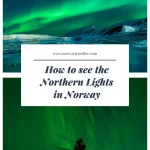

I would love to plan a cruise to the artic circle parts of Norway to see the northern lights. I also have relatives in Oslo, who I would like to visit. (My dad was Norwegian). I would like to be on a cruise ship with a balcony room. I would only have about 7 days to spend in Norway. Do you know of, or can you refer me to any senior citizen types of trips that would meet my requirements?
I would also like to know if I have any “citizen” type rights since I am the daughter of a Norwegian born father? Just curious.
Loved this guide! I was planning a trip to Norway soon and the tips on when and where to see the Northern Lights were incredibly helpful. Can’t wait to experience this natural wonder!